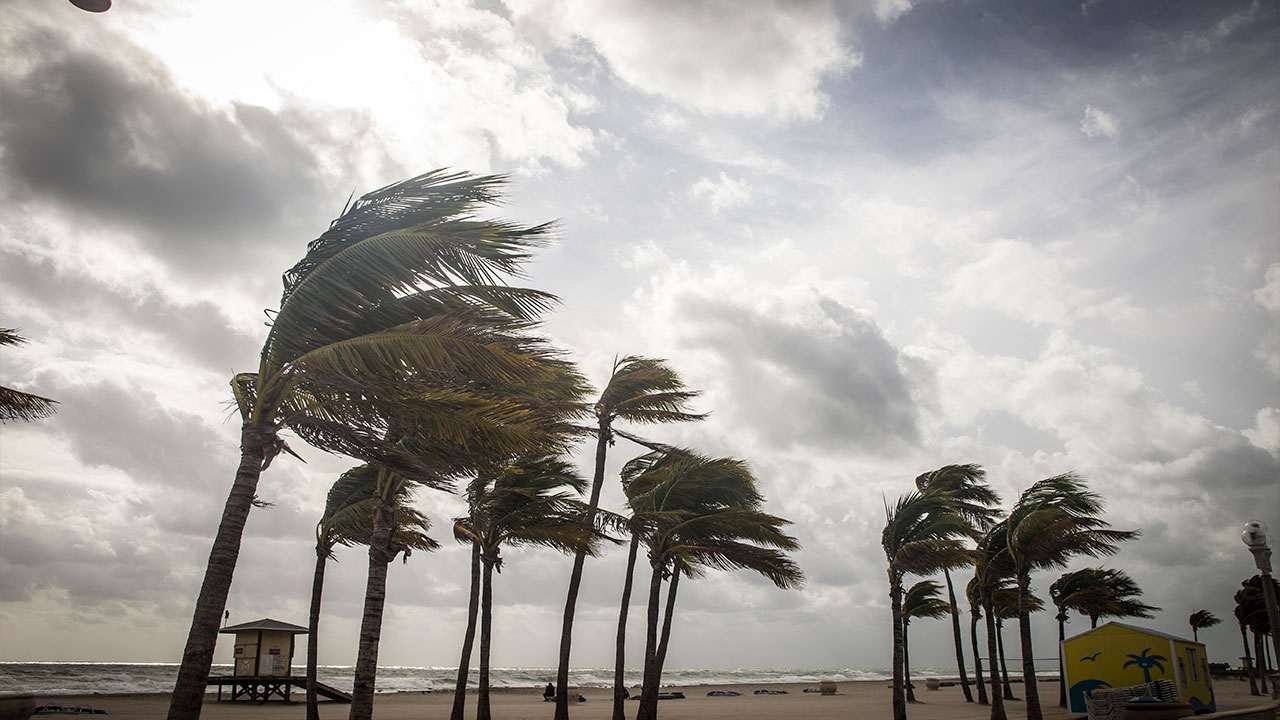The summer season is here, ushering in months of sunshine, vacationing…and hurricanes forming in the ocean. The Atlantic hurricane season runs from June 1 through November 30, and this year, it’s especially important to make sure your buildings are ready. According to the Atlantic Defense Fund, hurricanes in recent years have been accompanied by higher storm surges, stronger winds, and more destruction. These storms are becoming stronger and intensifying faster, which is causing hurricanes to become more costly for property-owning businesses and homeowners.
Commercial building managers not only have to worry about the integrity of their buildings but also the safety of their rooftop equipment. Hurricane preparedness is critical for avoiding hurricane roof damage. There are many things that commercial building owners and business owners can do to prepare their commercial property before an impending storm. The real key to bringing your commercial building through a hurricane is to have a plan and to prepare your building in advance.
Commercial Building Risk Factors During Hurricanes
There are a variety of risk factors that can cause damage during hurricanes, including:
- High winds can damage windows, tear equipment off of rooftops and fling debris in the direction of your commercial building.
- Torrential rains can cause flooding, water damage and roof leaks. Buildings that succumb to leaks may become damaged by mold unless dried out properly and quickly. Even buildings that are properly dried after a leak must still be repaired, as water can stain and cause other damage.
- Tornadoes are known to destroy buildings and fling debris that can break windows, destroy doors and rip roofs off the structures they're attached to.
- Storm surges can flood buildings and even knock homes and buildings from their foundations. The FEMA Flood Map Service Center shows your level of risk based on your location. Know how at risk your commercial building is and create a plan based on that risk.
Hurricane Prep for Commercial Buildings
As a building manager, there are many things you can do to prepare your commercial building for a hurricane.
Have a Disaster Response Plan In Place
Your business disaster response plan can prevent hurricane roof damage, but your plan must be written months in advance of a potential hurricane or tropical storm to ensure that everyone in the building and all managers know their roles in the days and hours before a storm. Some suggestions:
- Send out reminders to staff about hurricane-related procedures. Post information in the break room and review hurricane-related policies annually.
- Keep your company's insurance policy up to date. Know how to make a claim in the event that one must be made.
- Back up and protect computer files. Have a comprehensive IT protection plan outlining what to do if your company's database or computer information goes off-line, or is destroyed.
- Identify emergency supplies and keep them adequately stocked.
- Review your company's disaster preparedness plan once annually to update it as needed.
When a Storm is Approaching
When a storm approaches your business:
- Board up non-impact glass doors. If hurricane shutters are available, close them.
- Bring in outdoor signs and unsecured items on your property's lawn or parking lot.
- Put important files in the interior of your building, or relocate them to a more secure area.
- Shut down non-critical systems such as your HVAC system and sprinkler system.
- Move furniture and office equipment away from windows.
- Put unsecured items from desks and other surfaces into a box.
- Take down loose items off of walls. Put loose items in boxes to prevent them from flying around.
- Disconnect electrical devices (except for refrigerators).
Perform Rooftop Specific Prep
Your building's rooftop is especially vulnerable during a hurricane, for a variety of reasons. A rooftop that has not been well-maintained, for example, can be more vulnerable to damage from wind and heavy rain.
Roof leaks during hurricanes can cause mold to grow inside your commercial building. In addition, a poorly maintained rooftop can have rotten places beneath the roofing membrane, which can cause your building's roof to tear apart at the height of the storm.
Perform inspections. Keep your building's rooftop in good condition throughout the year. Get regular inspections from a roofing contractor and keep up to date with roofing maintenance. Perform repairs as needed.
Protect equipment on your roof. Install rooftop support systems that can help protect equipment from risks posed by hurricanes. Rooftop support systems keep equipment, HVAC ducts, plumbing and other exterior systems in place during a hurricane, and prevent these systems from causing punctures in your building's roof membrane.
Contact PHP Rooftop Support Systems
PHP produces rooftop support systems such as equipment supports and cable tray supports. PHP rooftop support systems are designed to last. To find out more about getting rooftop support systems for your commercial building, contact us today about pricing.




